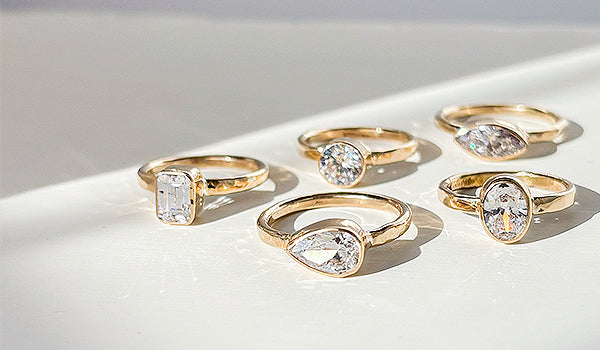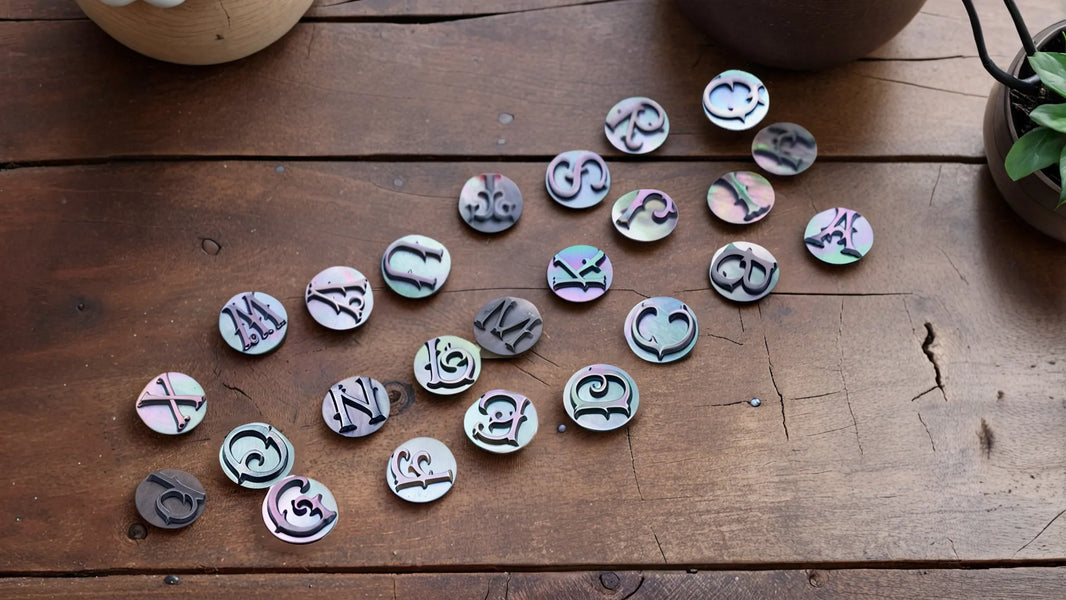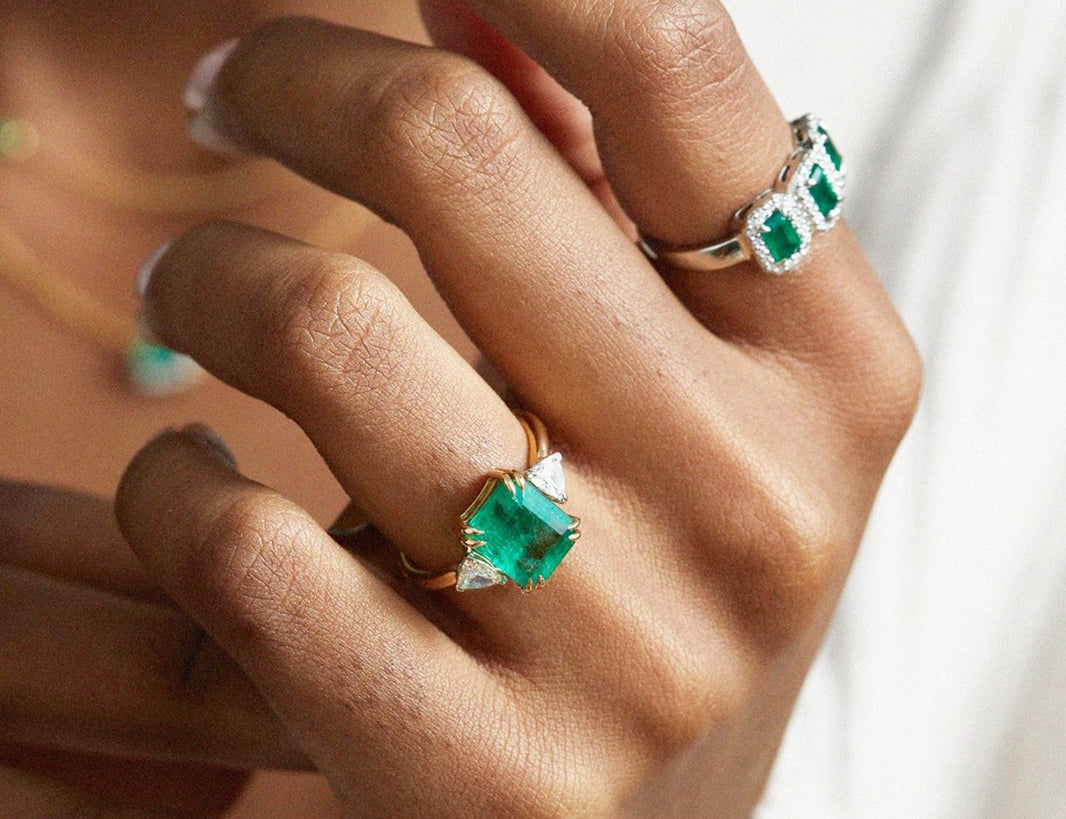A diamond gift should feel like a whisper of memory and a promise of tomorrow. Over years of examining stones under bench lights and watching clients’ eyes when a piece finally “speaks,” I’ve learned that lab grown diamonds deliver that moment with remarkable consistency, value, and conscience. This guide distills what truly matters—clear definitions, proven buying and care tips, candid pros and cons, and thoughtful recommendations—so you can choose a gift she’ll wear with pride for years.
What Lab Grown Diamonds Really Are
Lab grown diamonds are real diamonds formed by technology that replicates the natural growth process, resulting in the same crystal structure and the same inherent hardness and brilliance as mined stones. Grown Eternal Jewelry explains this plainly: chemically and physically, they are diamonds. In practice, that means they can be cut, polished, graded, and set just like natural stones, and they endure everyday life with the same resilience.
Cut still governs sparkle. BloomsyBox notes that whether the stone is round, oval, or pear, the precision of the cut dictates fire and scintillation. In other words, a well-cut lab diamond and a well-cut natural diamond will both dazzle in the same way to the naked eye.
An often-overlooked nuance is energy source. Lab grown diamonds are frequently promoted as more sustainable because they avoid land disturbance associated with mining, but production is energy intensive; BloomsyBox points out that the sustainability advantage depends significantly on the power mix behind the lab. A practical way to validate a brand’s claims is to ask whether their facilities run on renewable energy and whether they publish third-party carbon accounting.
Why Lab Grown Diamonds Shine as Gifts
Value stretches further. BloomsyBox estimates lab grown diamonds can be about 20–40% less expensive than comparable natural diamonds, freeing your budget for a larger carat weight, a better cut, or a more intricate design. That often translates into a more tailored gift: ornate halos, distinctive east–west settings, or custom pendants that previously felt out of reach.
Custom is faster and more attainable. Brands that specialize in lab grown pieces frequently streamline custom work. Grown Brilliance, for instance, offers a “Truly Custom” experience with a design preview and 360-degree video in roughly two to four days and delivery timelines as short as a couple of weeks. That’s not universal, but it illustrates how reliable, consistent stone supply can accelerate personalization.
Ethics and clarity of sourcing matter. For many givers, lab grown diamonds reflect a commitment to thoughtful purchasing. While “more ethical” is a meaningful descriptor, avoid treating it as a given. Instead, ask for details: where the piece is assembled, the labor standards of the workshop, the energy profile of the growing process, and whether the brand offers transparent warranty and service terms.
The Best Lab Grown Diamond Gifts for Her
Classic Stud Earrings
Few gifts deliver more daily joy than diamond studs. The round brilliant remains the most versatile, while ovals, cushions, and princess cuts create a signature look. In my experience, studs become a second skin when they balance presence with comfort. Consider her hair length and earlobe anatomy; larger stones can tilt on thin lobes. An overlooked, highly practical touch is requesting “jumbo” or disk-style backs to keep studs facing forward. It’s a small upgrade that has a big effect on how the earrings present from across the room.
Diamond Pendant Necklace
A solitaire pendant sits at the intersection of elegance and ease. Choose a shape that harmonizes with her features—the clean line of a pear elongates the neckline, while an emerald cut telegraphs modern calm. If she stacks necklaces, a bezel-set pendant minimizes snagging and offers a sleek, protective profile. Lab grown diamonds excel here because you can select the exact millimeter spread you want for proportion, often stepping up a size without straining the budget compared with a mined stone.
Tennis Bracelet
A river of light around the wrist feels both festive and timeless. With lab grown diamonds, the uniformity of well-matched stones is more achievable. If she’s active or uses her hands frequently, ask about clasp security; double-safety clasps or figure-eight locks reduce the risk of loss. Many people overlook fit, but a tennis bracelet should skim the wrist without twisting; when in doubt, err slightly snug, especially for daily wear.
Stackable and Anniversary Bands
Bands invite storytelling. A sleek pavé band celebrates milestone achievements, while an eternity band can mark a wedding anniversary in a way that complements her engagement ring. Lab grown diamonds broaden the design palette, making intricate French pavé or alternating shapes (rounds and baguettes, for example) more accessible. If you anticipate annual resizing, check policies up front. Grown Brilliance highlights complimentary resizing in some scenarios, which can be invaluable for long-term comfort.
Statement Drops and Hoops
For the woman who loves movement and gleam, diamond drops and hoops are an instant occasion-maker. An inside-out hoop maximizes sparkle from all angles, and lab grown stones keep larger diameters within reach. When gifting hoops, think about weight and hinge quality; a refined profile and a crisp latch keep the piece wearable from brunch to black tie.
Modern Right-Hand Rings
A right-hand ring lets her express her style independently of bridal symbolism. I gravitate to east–west ovals, elongated cushions, and geometric halos for pieces that feel artful without being loud. Lab grown diamonds enable bolder center stones or more decorative halos at a similar cost to subtler mined-stone designs, which can be the difference between a ring she likes and one she never takes off.

Lab vs. Natural: A Clear Comparison
Aspect |
Lab Grown Diamonds |
Natural Diamonds |
Source/Note |
Visual appeal to the naked eye |
Indistinguishable to most; cut quality drives sparkle |
Indistinguishable to most; cut quality drives sparkle |
BloomsyBox |
Typical price for comparable quality |
Commonly about 20–40% less |
Commands a premium tied to rarity |
BloomsyBox |
Environmental footprint |
Avoids land disturbance; energy intensive; impact depends on power source |
Mining involves land disturbance, water use, and emissions |
BloomsyBox |
Availability for custom work |
Consistent supply and sizes aid customization and timelines |
Availability can vary with market cycles |
Grown Brilliance example; general observation |
Identification under instruments |
Jewelers can distinguish using tools |
Jewelers can distinguish using tools |
BloomsyBox |
One point sometimes glossed over is regional variability in power grids. A lab in a region with abundant renewables could have a markedly different footprint from one relying on fossil fuel–heavy grids. If environmental impact is central to your decision, ask the retailer for their energy sourcing and any third-party verification to confirm the claims.

How to Choose: A Practical Buying Guide
Begin with her life, then refine the gem. If she rarely removes jewelry, prioritize designs that stand up to daily routines—bezel pendants, low-set solitaires, and huggie or medium hoops. If she loves to dress for events, consider a graduated tennis necklace or elongated drop earrings that frame the face.
Within the 4Cs, cut matters most for that lively, scintillating look. Opt for excellent or ideal cut grades for round brilliants, and in fancy shapes, favor stones with strong light performance over chasing the largest face-up size. Color and clarity are about balance. Many recipients will not perceive a one- or two-grade difference in color in typical lighting; clarity eye-cleanliness is more important than a letter on a lab report. Because lab grown stones often present fewer noticeable inclusions, as BloomsyBox suggests, you may be able to select a slightly lower clarity grade while keeping the stone visually clean.
Metal choice frames the diamond. White gold and platinum emphasize crisp brilliance; yellow and rose gold warm the entire composition and can make near-colorless grades appear slightly whiter by contrast. Consider her existing jewelry to ensure your gift layers gracefully.
Confirm the support behind the sparkle. Ask about warranty, resize options, and service timelines. Grown Brilliance, as an example, advertises a lifetime manufacturing warranty and swift custom previews with delivery in as little as roughly two weeks. Policies vary widely, so it is worth reading the fine print; favorable service terms can matter as much as the stone itself over the piece’s lifetime.
For customization, set expectations early. A practical, often-missed insight is that design approvals can be the bottleneck, not fabrication. Brands that provide clear 3D previews or 360-degree videos in a couple of days reduce back-and-forth. If your date is fixed—Valentine’s Day or a holiday—ask the jeweler to show you a current production calendar before you finalize the design.

Care and Longevity: Keeping Brilliance Day One Bright
Diamonds are hard but not invincible, and settings collect the world’s tiny residues. Ada Diamonds emphasizes regular care and cleaning for lab grown diamond engagement rings and fine jewelry. A simple at-home routine—soaking in warm water with a mild dish soap, gently brushing under the stone and along the setting, then rinsing and drying with a lint-free cloth—is widely recommended by jewelers, including Ada Diamonds. Avoid bleach, chlorine-based cleaners, and abrasive products. Take rings off before weight training, gardening, or any task where a prong can catch.
Professional checks prevent surprises. A jeweler can confirm prong integrity, tighten a loose stone, and deep-clean the setting in minutes. If you rarely remove tennis bracelets or everyday rings, schedule inspections at least a couple of times a year. When storing pieces, keep them separate to prevent diamonds from scratching other gemstones or metal surfaces.
One practical verification step—especially if you adopt a new cleaning product—is to test on a small, inconspicuous section of metal first. While diamonds tolerate water and gentle soaps well, certain treated finishes on metals or porous gems in multi-stone pieces may not.
Matching Gift to Moment
Gifts carry memory, and the right diamond form meets the moment. For an anniversary that celebrates the rhythm of daily life together, studs or a bezel pendant become part of her routine. For a milestone birthday, a tennis bracelet or statement right-hand ring can make the day feel once-in-a-decade special. For winter holidays and Valentine’s Day, pieces with movement—inside-out hoops or graduated drops—photograph beautifully in evening light, a detail that matters if the moment will be captured and shared with family.
If timing is tight, ask about in-stock settings that can be mounted with a handpicked center stone. With lab grown diamonds’ more consistent availability, this hybrid approach often shortens delivery without sacrificing personal selection.
A Quick Gift Planner
Gift Type |
Everyday Ease |
Occasion Impact |
Good To Know |
Stud earrings |
Extremely high |
Moderate |
Jumbo backs keep larger studs upright; worth requesting |
Bezel pendant |
Very high |
Subtle to refined |
Bezel protects edges; great for layering |
Tennis bracelet |
Moderate |
High |
Confirm clasp security; fit should skim the wrist |
Inside-out hoops |
High |
High |
Weight and hinge quality drive comfort and longevity |
Eternity or pavé band |
High |
Moderate to high |
Ask about resizing policy before you buy |
Right-hand statement ring |
Moderate |
Very high |
Low-profile settings improve daily wearability |
The table reflects practical shop-floor experience and brand policy examples; policies and build quality vary by retailer, so verify specifics with your chosen jeweler.

Pros and Cons at a Glance
Lab grown diamonds expand choice and value. They typically cost less than comparable mined stones, making superior cut quality, larger sizes, or intricate settings attainable, and customization is often faster thanks to consistent supply. On the other hand, environmental benefits depend on the lab’s energy source, and narratives around sustainability can blur without published data. If provenance stories tied to geological rarity resonate deeply with the recipient, natural diamonds still carry that singular appeal. Either path can lead to a meaningful, beautiful gift; the best choice rests on her values, your timeline, and how you both want the piece to feel in daily life.
Takeaway
Choose the piece that will live where she lives. Let cut lead brilliance, select a design aligned with her routine, and confirm the brand’s warranty and service commitments so your gift stays luminous for years. Lab grown diamonds offer extraordinary flexibility to tailor a piece that feels like her—precisely the point of a great gift.
Short FAQ
Are lab grown diamonds real diamonds?
Yes. They share the same chemical composition and physical properties as mined diamonds. Grown Eternal Jewelry underscores that they are diamonds in every meaningful sense; they are graded by the same criteria and can last for generations with proper care.
How do lab grown diamonds compare in price and quality?
BloomsyBox reports that lab grown diamonds commonly run about 20–40% less for comparable quality. That savings can be invested in a better cut grade or a more creative design, which usually has a greater impact on how the piece looks and feels.
Are lab grown diamonds always more sustainable?
They generally avoid land disturbance associated with mining, but production is energy intensive. BloomsyBox highlights that the net impact depends on the lab’s power sources. Ask retailers whether their growing facilities use renewable energy and whether they publish third-party carbon or energy metrics.
Can a jeweler tell if a diamond is lab grown?
To the naked eye, both types can look the same. Jewelers can distinguish them with specialized instruments and report notations, as BloomsyBox notes. This does not diminish the beauty or durability of lab grown stones; it simply reflects modern identification standards.
What should I look for in a brand’s service policy?
Prioritize clear warranties, resizing options, and realistic timelines. Grown Brilliance, as an example, promotes a lifetime manufacturing warranty and quick custom previews with delivery in roughly a couple of weeks. Policies differ, so read the details and confirm how service is handled after shipping.
How should I clean and care for diamond jewelry at home?
Use warm water and a mild dish soap, a soft brush to reach under the stone and along the setting, then rinse and dry with a lint-free cloth. Avoid harsh chemicals, and remove rings for activities that can bend prongs or mar metal. Ada Diamonds emphasizes routine cleaning for lasting brilliance; periodic professional inspections are wise.
References
- https://4cs.gia.edu/en-us/simulants-moissanite-and-lab-grown-diamonds/
- https://www.academia.edu/129555736/New_Era_of_Lab_Grown_Diamond
- https://radio.uta.edu/Ask-The-Experts/5%20Reasons%20to%20Buy%20a%20Lab%20Grown%20Diamond%20Engagement%20Ring.php
- https://help.pandora.net/s/article/How-to-care-for-your-lab-grown-diamonds?
- https://www.grownbrilliance.com/anniversary-gifts
- https://www.adadiamonds.com/knowledge-base/how-to-care-for-your-lab-grown-diamond-engagement-ring?srsltid=AfmBOorK-TqEuoQJ7Tl4OH6IpFvTyALMcLd12e_Wobq4Zh_vuIQkVNcB
- https://www.adiamor.com/Education/Diamond-Care?srsltid=AfmBOor4U5JyVM7RdG6cqlzTtw42XreCg8rgu5LfxqeNAU2kLaDmbri0
- https://www.cleanorigin.com/jewelry-gifts/?srsltid=AfmBOoo5VhajNO1oVGZPdeM6SR0Qpy8I3-N1eaoq8_Xq1g4jezcbiku0
- https://kimai.com/gifts/
- https://ourosjewels.com/collections/lab-grown-diamond-jewelry-gifts?srsltid=AfmBOoqiIKrwg9uro1tW-ujOoUfGskzmWhfm-phcxRrsNBl7VB4FE40b









